Unlock Your Inner Potential with Kundalini Yoga Teacher Training Course
Experience Classical Kundalini Yoga online, rooted in the Satyananda tradition of the Bihar School of Yoga, for a deeper and more authentic journey into yogic practice.
Starting from Feb 10th – March 21, 2026 (40 Days Intensive course).
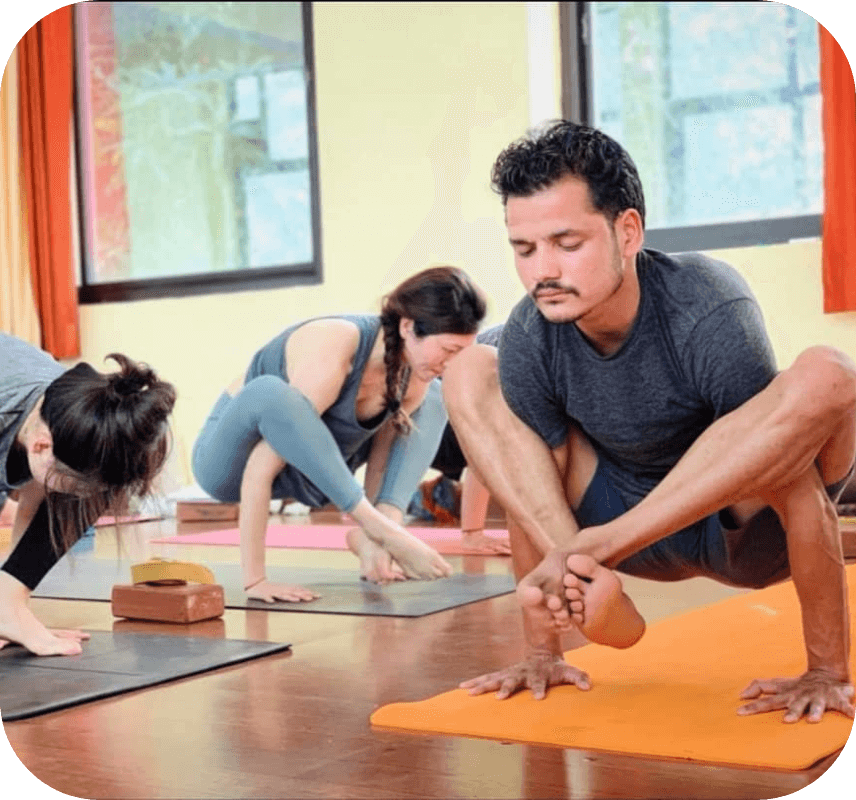
Kundalini Yoga is a powerful practice that focuses on awakening the dormant energy within, known as Kundalini. Rooted in ancient yogic tradition, it has been practiced for thousands of years and is known for its deep transformational and healing effects on the mind, body, and spirit.
Begin your journey toward becoming a certified yoga teacher with our Yoga Alliance accredited 200-hour online Kundalini Yoga Teacher Training course.
FITSRI: A Yoga Alliance Registered Yoga School (RYS) from India
Our online kundalini yoga course gives you some unique benefits:
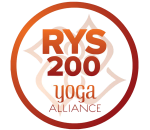
Fully Accredited Training
Join FITSRI – a recognized Yoga Alliance Registered Yoga School (RYS).
- Our course is Yoga Alliance registered and recognized worldwide
- This course gives you assurance of quality and professional certification
- Access 140+ live yoga classes providing practical and immersive learning experiences.
- Enhance your career opportunities in the yoga industry

Study in Live Class + On Your Own Schedule
On joining this course, you will have the flexibility to learn in the live class or learn at your own pace.
- Learn from the comfort of your own home. There will be 4 hours live class each day for 40 days you can attend comfortably from your home.
- Flexible study options that suit your lifestyle. After each live class each day, you will be get recording to replay class content; watch it whenever you got time.
- Access course materials anytime, anywhere
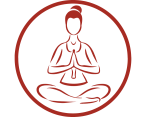
Full Teacher Support
Take support from experienced Kundalini yoga teachers.
- Personalized support from experienced teachers
- Regular feedback to improve your practice and teaching skills
- Access to a community of like-minded yoga practitioners
What You Will Learn
Here’s an overview of the key components covered in our 200-hour Kundalini Yoga Teacher Certification Course:
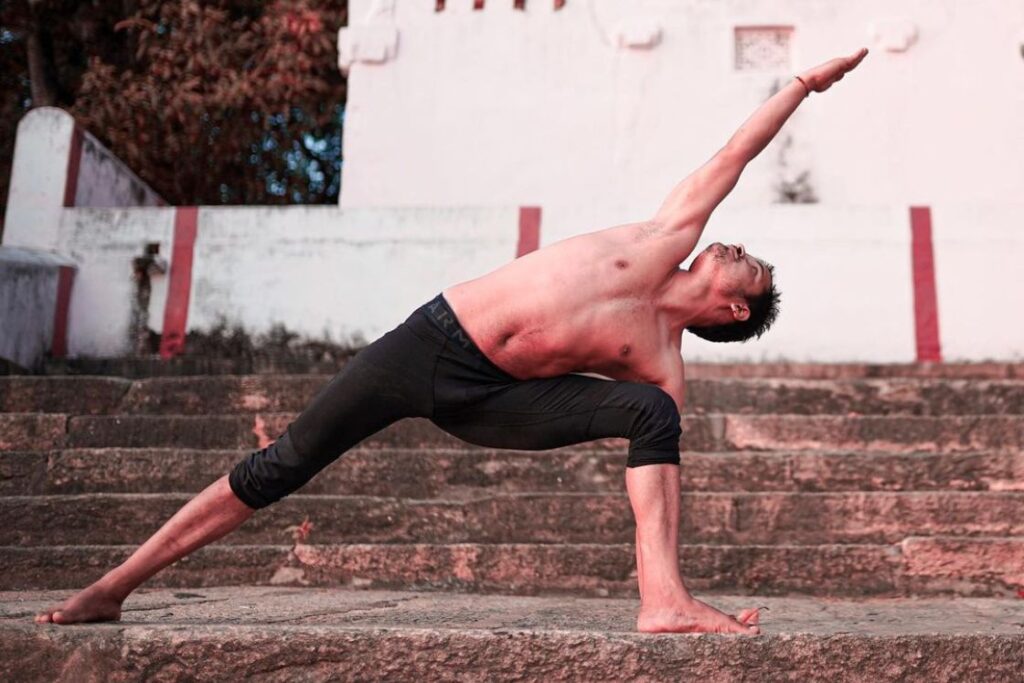
Kundalini Yoga Poses
You’ll gain a solid understanding of asanas (yoga poses) specific to the practice of Kundalini Yoga. Each posture will be explored in relation to its effect on the chakras (energy centers), helping to awaken and direct Kundalini energy.
The course includes detailed instruction on:
- Alignment and technique
- Physical and energetic benefits
- Contraindications and safety cues
- Variations for different body types and experience levels
By the end of this module, you’ll be able to confidently practice and teach these poses with a focus on safety, accessibility, and energetic awareness.
Kundalini Kriyas
Kundalini Kriyas are structured sequences that combine movement, breath, and sound to stimulate and balance the chakras. In this training, you’ll learn how to:
- Understand the purpose and energetic impact of key kriyas
- Sequence kriyas effectively for a complete class or personal practice
- Apply the symbolic meaning behind kriyas and their relationship to human consciousness
Regular practice of kriyas will help you develop a stronger connection with your subtle energy system and support spiritual growth.
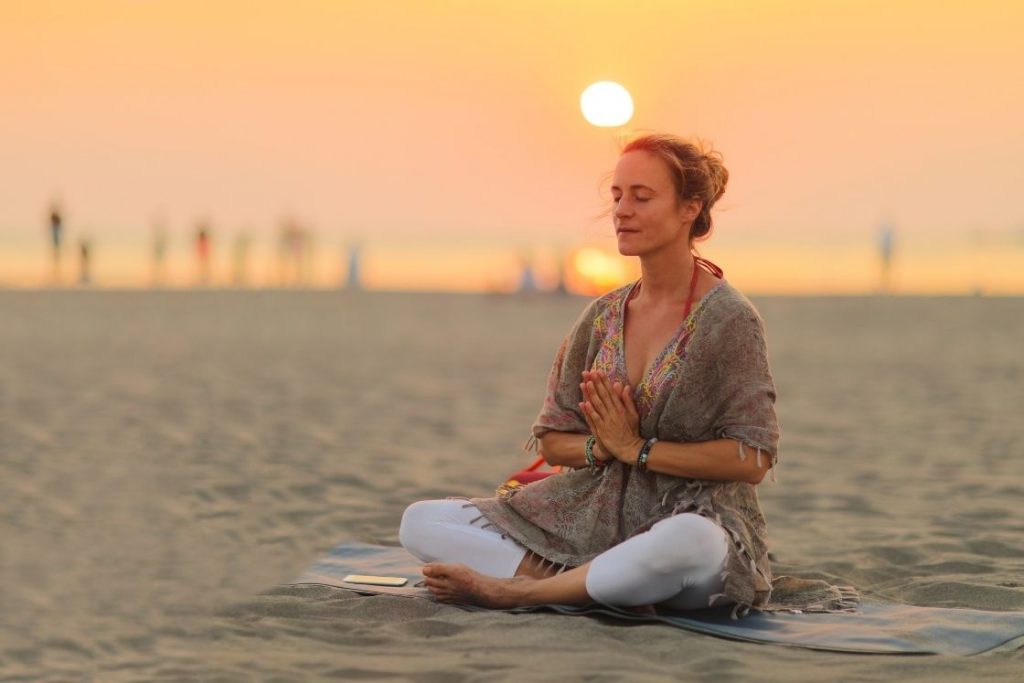
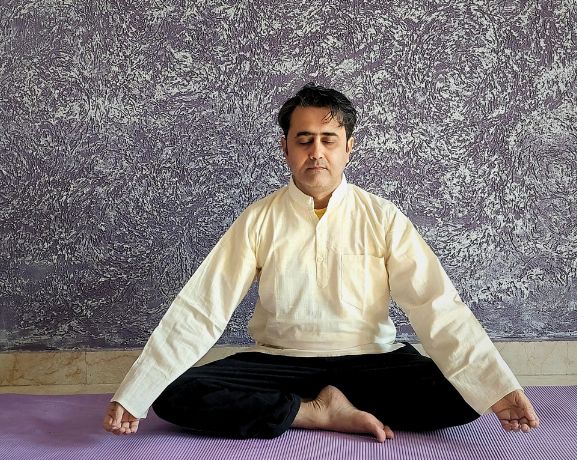
The Art of Meditation
The meditation techniques taught in our Kundalini Yoga Teacher Training Course gradually familiarize you with the aspects of the Kundalini Yoga meditation process. You will learn:
- Kaya-Sthairyam, which is a technique that focuses on body awareness and mental steadiness.
- Ajapa Japa, with stages 1 and 2, which involves awareness of the spontaneous repetition of the mantra.
- In addition, Yoga Nidra, a technique of guided yogic relaxation at the beginner level,
- Chakra Shuddhi, a technique of chakra cleansing, will be taught.
Finally, you will also have an Ajna Chakra Activation Session which will include Trataka (intense concentration) on Dot, Yantra (archetypal symbol), Nose tip gazing technique, Shambhavi Mudra with Om mantra chanting, and Ajna Space Visualization Technique.
Curious About Kundalini, Chakra, and Tantra?
Please fill up the below form to watch the Muladhara Awareness session for FREE!
Pranayama incorporated with Mudras and Bandhas
Pranayama is a powerful tool to awaken and activate the Kundalini energy. During our Kundalini Yoga Teacher Training course, you will not only learn pranayama techniques but also how to incorporate them with various types of Mudras and Bandhas which further purify and balance the energy channels (nadis) in the body.
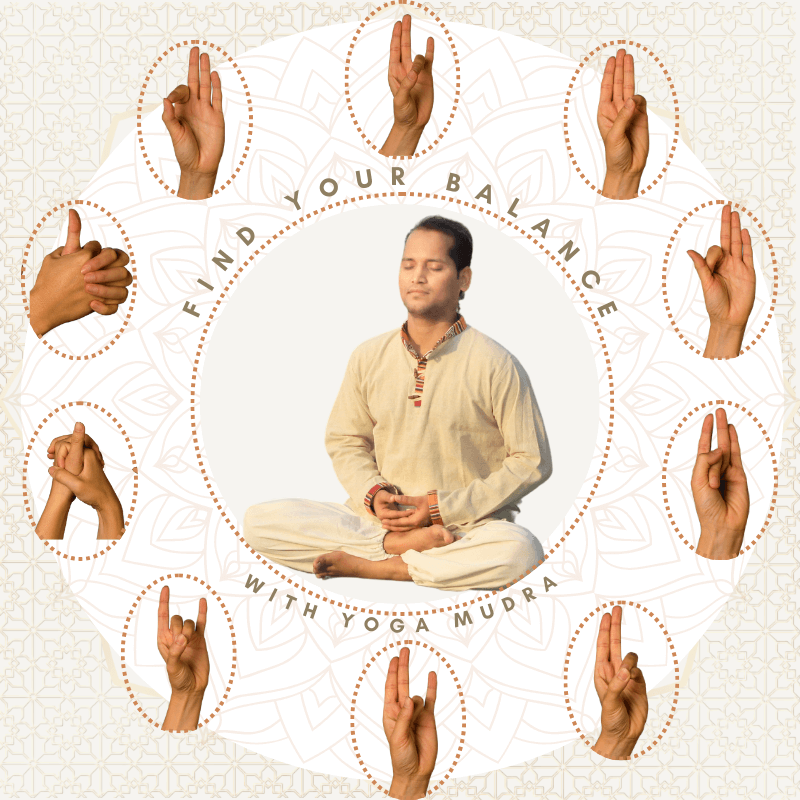
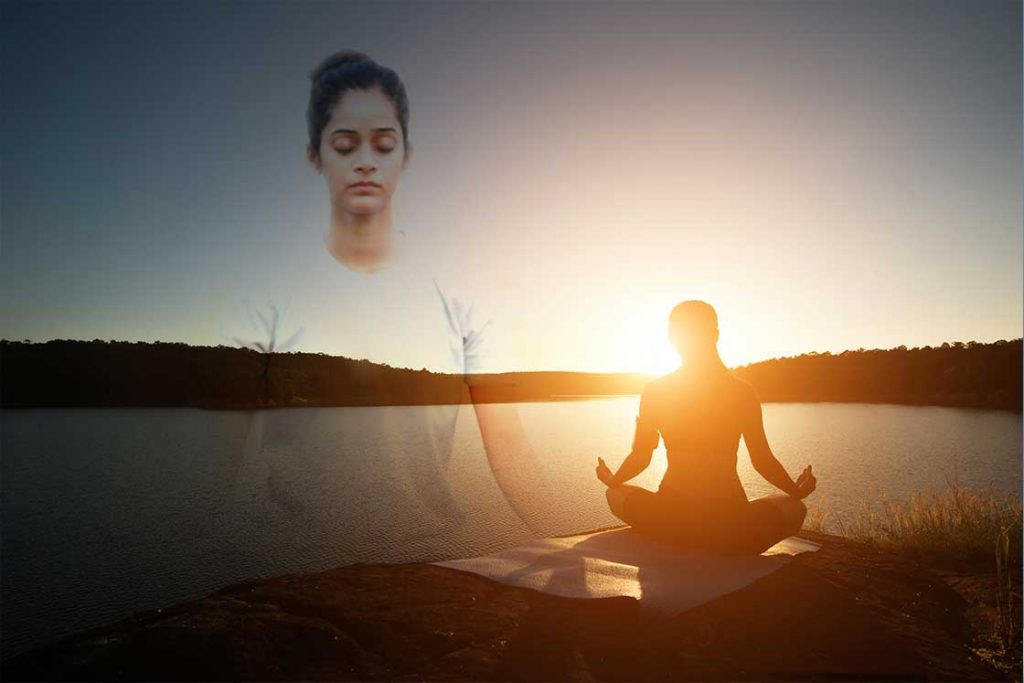
Yoga Philosophy
During the Yoga Philosophy component of our Kundalini Yoga Teacher Training course, you will gain a deep understanding of the foundation of Tantra philosophy and the Kundalini Yoga Tradition.
You will learn essential concepts related to kundalini like prana, chakras, Chitta, nadis, koshas, kleshas, etc.
This course will help you explore the teachings of Hatha Yoga in reference to Kundalini Yoga and how the two practices are intertwined. You will study the history and evolution of Kundalini Yoga, including its ancient roots and its development in modern times.
Anatomy and physiology related to Kundalini Yoga
In this course, you will also explore human anatomy and physiology in relation to Kundalini Yoga. You will learn about the different systems of the body and their functions, and how practising Kundalini Yoga can positively impact them. You will also understand the energetic anatomy of the body, including the chakras, nadis, and Kundalini energy.
Through this knowledge, you will gain a deeper understanding of the connection between the physical and subtle aspects of the body, and how they work together to enhance overall health and well-being. The knowledge gained in this section will help you guide your students in a safe and effective Kundalini Yoga practice.

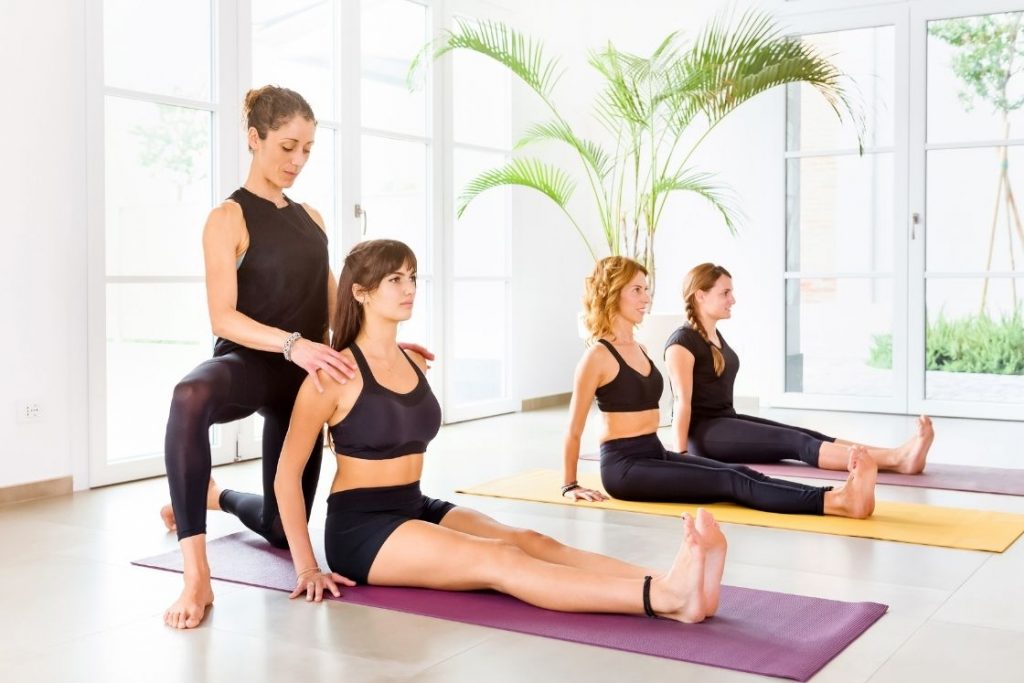
Teaching Techniques and sequencing
You will learn how to create and teach Kundalini Yoga classes that are safe, effective, and transformative. You will gain an understanding of the principles of class sequencing, including how to warm up the body, build towards peak postures and movements, and cool down the body. You will learn how to adapt your classes to different levels of experience and fitness, and how to modify poses for students with injuries or limitations.
In addition, you will learn the art of effective demonstration, cueing, and adjustments, as well as how to use props to support your students in their practice. By the end of the course, you will have the skills and confidence to lead inspiring, meaningful, and impactful Kundalini Yoga classes that empower your students to deepen their practice and transform their lives.
Online Kundalini Yoga TTC Curriculum
Our 200-hour Kundalini Yoga Teacher Training Course is structured into three core components, each spanning approximately 9–10 days of guided learning. The curriculum is designed in alignment with Yoga Alliance USA standards, offering in-depth training in Kundalini Yoga philosophy, techniques, and teaching methodology.
Each phase of the program builds on the previous one, providing a progressive and holistic learning experience.
Below is a detailed breakdown of the topics and modules covered across the three components of the course:
Component-1 (Foundation)
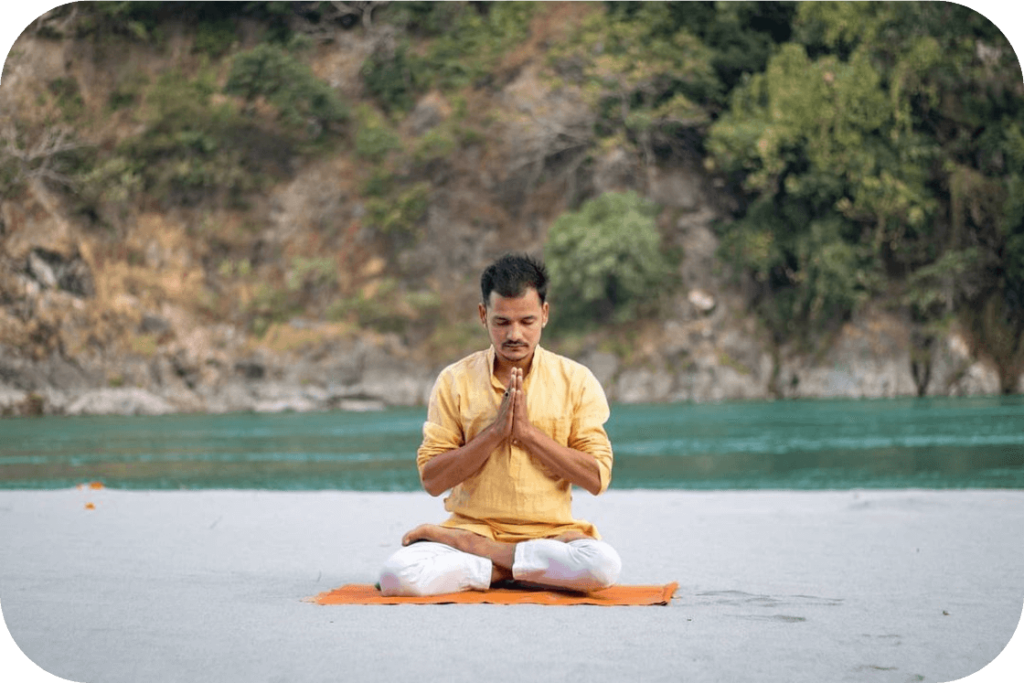
Part I: Techniques, Training and Practice
Paper-1 (Technique, Training and Practice) lays a strong foundation of traditional Hatha Yoga, Vinyasa yoga and Meditation techniques sourced from authentic and time-proven systems of Yoga traditions. Purpose of these classes in component-1 is to equip the practitioners with understanding and knowledge of the fundamental techniques of Asana, Pranayama, Mudra, Bandha and Hatha Yoga cleansing techniques used in Kundalini Kriyas.
Training Modules:
- Practical (Hatha Yoga)
- Asana: PM Series 1, 2, 3 (Preliminary Hatha yoga movements), Standing and Balancing Asana Series, Backward Bending Series, Forward Bending Series, Vajrasana Series, Meditation Asana Series, Introduction to Sun Salutation
- Pranayama: Pre-Pranayama techniques, Nadishodhana, Kapalbhati, Bhramari, Ujjayi and Bhastrika- Preparatory
- Mudra and Bandha: Hand Mudras, Head Mudra, Prana Mudra with Full Yogic Breath (Awareness on physical level), Jalandhara Bandha, Shambavi Mudra, NasikagraDhristi
- Shatkriya: Neti and VamanDhauti (Kunjal Kriya)
Practical (Meditation):
Meditation techniques covered during component-1 systematically train the participants into process of meditation. The techniques taught during the component gradually familiarize one with the aspects of Kundalini Yoga meditation process.
Techniques Taught:
- Kaya-Sthairyam (Technique on Body-Awareness and Mental steadiness)
- Ajapa Japa: Stages: 1, 2 (Awareness of spontaneous repetition of mantra) )
- Yoga Nidra (A technique of guided yogic relaxation) Stage: Beginner)
- Chakra Shuddhi (A technique of chakra cleansing) )
- Ajna Chakra Activation Session- Trataka (intense concentration) on Dot, Yantra (archetypal symbol), Nose tip gazing technique, Shambhavi Mudra with Om mantra chanting, Ajna Space Visualization Technique)
Part II: Yoga Philosophy, Lifestyle and Ethics for Yoga Teachers
Paper-2 in component-1 introduces one to the founding principles of yoga philosophy, its branches, various approaches and affiliated metaphysical background. There is an in-depth discussion on the Classical system of Patanjali Raja Yoga and traditional Hatha Yoga. Understanding both systems is essential in order to grasp the concept of Kundalini Yoga.
Topics Taught:
- Foundation of Yoga Philosophy
- Definition, Historical Sketch, Branches, Classical System of Raja Yoga of Patanjali: Background of Samkhya Philosophy, History and Origin of Raja Yoga
- Tradition of Hatha Yoga
- Historical and Philosophical background of Hatha Yoga, Purpose and Literature. Aspects of Hatha Yoga with reference to Hatha Yoga Pradipika and Gherand Samhita.
- Aspects and purposes of Asana (Posture), Pranayama (Breath-work), Mudra (psycho-physiological gestures), Bandha (Energy-locks).
Part III: Anatomy and Physiology
In the Anatomy and Physiology section, we first lay the foundation of Yogic Physiology. This helps to familiarize one with understanding the Nadi system, Chakras, concept of Prana (energy principle) etc. Topics Taught:
- Yogic Physiology
- Structure of Pranic system: Concept of Prana, Nadis, Chakras, Prana Vayu, Pancha Tattvas and Pancha Kosha.Classification of prana Vayu, their functions and location in the body. Role of Pranic system in life, importance of prana, nadis, Vayu, chakras etc. in Health And Disease.
Component-2 (Level-Intermediate)
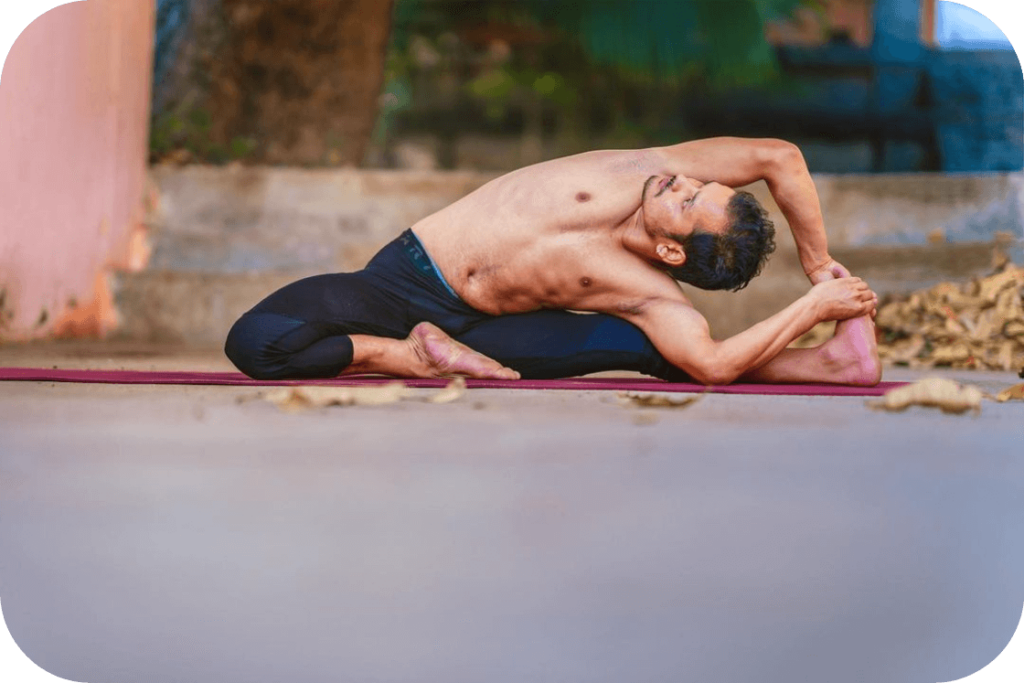
Paper I: Techniques, Training and Practice
Component-2 of the course entails intermediate level of practices and understanding of the system of Kundalini Yoga. In this component, each paper helps to delve into deeper layers of knowledge and practice of Kundalini Yoga.
Practical teaching of traditional Hatha Yoga introduces one to the concept of spiritual sadhana and incorporating the practical dimension of energy in the form of mantra into the practices. Various kriyas, mudra and bandhas of advanced nature are introduced in the classes. And even deeper level of bodily cleansing is done through the technique of intense yogic intestinal wash (Laghoo Shakha Prakshalana).
Practical (Hatha Yoga)
Hatha Yoga techniques covered during component-2 train the participants into practical dimensions of Hatha Yoga style. The techniques taught during the component gradually familiarize one with the aspects of Kundalini Yoga with reference to Hatha Yoga practices.
Techniques Taught:
- Asana: Introducing the concept of Sadhana, Surya Namaskar and Chandra
- Namaskar: Emphasizing on the elements of flow, rhythm etc. with the breath and Mantras
- Pranayama: Nadishodhana with Antarkumbhaka, Kapalbhati, Bhastrika, Ujjayi with Khechari Mudra and Agnisara Kriya
- Mudra and Bandha: Incorporating bandhas and mudras in pranayama sessions, Kaya (Postural) Mudra, Mula bandha, Vazroli/Sahjoli Mudra, Ashwini Mudra, uddiyana bandha in standing and sitting
Practical (Meditation)
Each of the meditation techniques in component-2 incorporates more intense and deeper stages of mind, psyche and energy exploration. Each of the techniques taught in this component are practiced and experienced in light of chakra awareness and dimension of energies. Special dedicated sessions on chakra activation will be taught in the program during this component. Teachings of these practices will help the prospective teacher to understand as how to incorporate various Kriyas and Hatha Yoga tool in Kundalini Yoga sessions.
Techniques Taught:
- AntarMouna: Stages: 3
- Trataka as Pratyahara
- Chidakasha Dharana
- Ajapa Japa: stage-3
- Yoga Nidra: Stage: Intermediate (Visualization of psychic passages, chakras)
- Manipura Chakra Activation Session: PM2 series of Asana; Incorporating relevant asanas for Manipura Chakra, Manipura Chakra and Ksetram (trigger point) location session, ManipuraShuddhi (Purification), Agnisara Kriya, Uddiyana bandha and Madhyama, vama, DakshinaNauli.
- Anahata Chakra Activation Session: Incorporating relevant preparatory asanas for Anahata Chakra activation, Anahata Chakra and Ksetram (trigger point) location session, Anahata Chakra purification, Ajapa Japa and Intensive Heart Chakra and Hear space Harmonization Technique (Dharana Practice)
- Muladhara Chakra Activation Session: Mula Bandha, Vazroli/Sahjoli Mudra, Ashwini Mudra, Chakra andKshetram (trigger-point) Location session, Nasikagra Drishti.
- Swadhisthana Chakra Activation Session: Shati-bandha Series, Incorporating relevant asanas for Swadhisthana Chakra, Swadhisthana Chakra and Ksetram (trigger point) location session, Ashwini Mudra, vajroli and Sahjoli Mudra.
Paper II: Yoga Philosophy, Lifestyle and Ethics for Yoga Teachers
This paper on philosophy intends to shed light on the foundation of Tantra philosophy and Kundalini Yoga Tradition. An in-depth discussion on Tantra Philosophy and Kundalini yoga tradition will help the practitioner to associate deeply with the practical techniques learnt in the practice sessions.
Topics Taught:
- Traditions of Tantra
- Concept and Origin of Tantra, Basic Postulates of Tantra. Concept of Shiva and Shakti. Tantric concept of creation. Concept of 36 elements in Tantras. Tantric traditions. Tools of Tantras- Mantra, Yantra and Mandala.
- Tradition of Kundalini Yoga
- Concept of Kundalini Yoga: Tantras as the philosophical background of Kundalini yoga, concept of Kundalini. Concept of chakras, their location and psycho-physical significance, Method of Kundalini Sadhana and Effects of Kundalini Awakening.
Paper III: Anatomy and Physiology
Anatomy and Physiology session in component-2 encompasses talks on bodily systems and their functioning. Each of the topics of Anatomy and Physiology lectures is taught in light of Yogic practices and process. The intention of this study is to deepen one’s understanding of yogic practices and their influence on the physical systems and organs.
Topics Taught:
- The Neuro-Musculoskeletal System
- Muscles; kinds of muscles and functions. Skeletal system; functions of bones and various kinds of joints in yoga postures. Musculoskeletal system in yogic practice. The Nervous system: Functions of the nervous system and brain (in light of yogic practices)
- The Respiratory and Cardiovascular systems (in light of yogic breathing)
- Muscles of respiration, physiology of respiration and effects of different yogic breathing patterns on human physiology, effects of yogic practices on the cardiovascular system.
Component-3 (Level-Advanced)
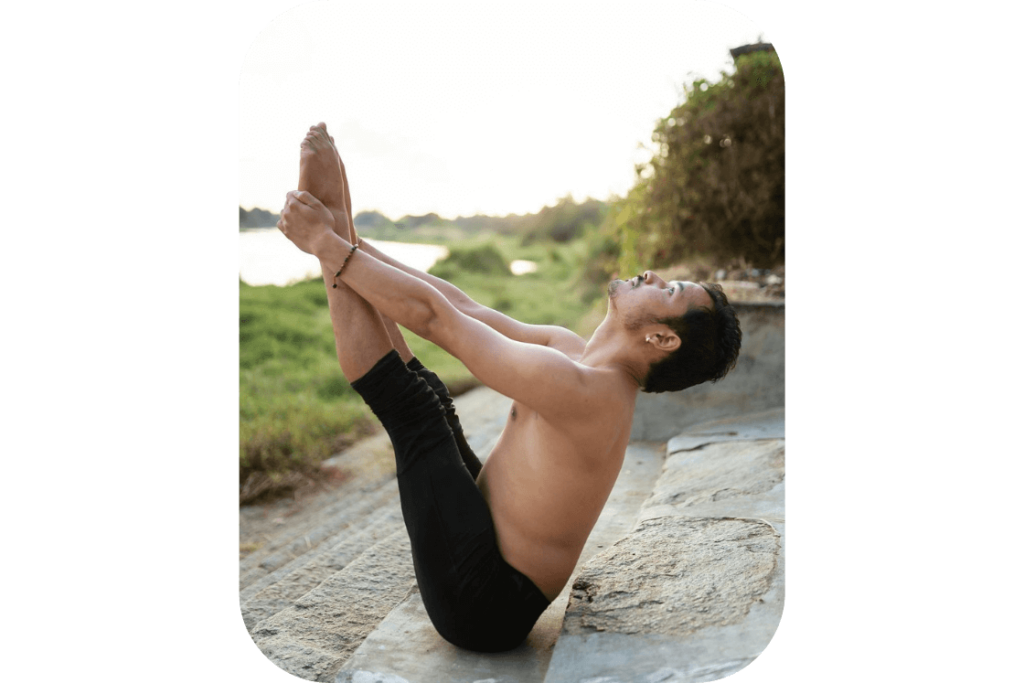
Paper I: Techniques, Training, And Practice
This last component comprises of sessions developing teaching skills and understanding in prospective teachers. Topics incorporated in each of the papers in component-3 intend to equip the participants with the exhaustive knowledge and skills required to teach a quality class.
Practical (Hatha Yoga)
Hatha Yoga techniques covered during component III completely train the participants in practical dimensions of the Hatha Yoga style directed towards awakening the Kundalini Energy.
Techniques Taught:
Asana
- Incorporating subtle and intense kriyas into a yoga program with insight and purpose to intensify the experiences of yogic practices.
- Group Work Assessment and Discussion: student teaching as well as observing and assisting in Classes taught by others. May be a combination of supervised and unsupervised.
- Instilling the ideas of using Hatha Yoga tools in Kundalini Yoga classes.
Understanding the various Traditional Kundalini Kriyas and using them in yoga classes.
- Expanding the idea of sadhana in Hatha and Kundalini yoga classes. Identifying and working on one Kriya as personal sadhana and maintaining a spiritual diary.
Pranayama
Nadi shodhana with advanced retention, Kapalbhati, Bhramari with awareness of Chakras, Bhastrika-Advanced and Agnisar Kriya
Mudra And Bandha
- Advanced pranayama with Maha Bandha, moorcha pranayama and other advanced kriyas
- Introduction to Kriya Yoga- Vipreet-Karani Mudra, rotation of consciousness in the psychic pathways
Practical (Meditation)
Meditation techniques in Component III incorporate the most intense and deepest stages of mind, psyche, and energy exploration. Each of the techniques taught in this component is practiced and experienced in light of chakra awareness and dimension of energies in utmost detail.
Techniques Taught:
- Yoga Nidra: stage: Advanced (Awareness of chakras, Tattvas, and symbols)
- Trataka (As a Dharana Practice) )
- Chakra Dharana Staged A and B)
- Vishuddhi Chakra Activation Session: Incorporating relevant preparatory asanas and Mudras for Vishuddhi Chakra activation, Vishuddhi Chakra and Ksetram (trigger point) location session, Vishuddhi Chakra purification)
- Integrated Chakra Awareness Module: Integrated Chakra Meditation, Nada (subtle sound) Chakra Meditation, Chaturtha Pranayama, Chakra Yoga Nidra, Unmani Mudra, Bija Mantra Rotation and Drawing the Chakra energies. )
Paper II: Yoga Philosophy, Lifestyle, and Ethics for Yoga Teachers
- The Tradition of Kriya Yoga
- Definition, History, and Scriptural references, Purpose, Three specific plans of Kriya Yoga, Tools of Kriya Yoga, Approach and attitude towards the practice and tradition.
- Ethics for a Yoga Teacher (the prerequisites)
- Ethics for yoga teachers, ‘living the Life of the Yogi’, teacher-student relationship; cautions and pitfalls of Teaching Tantras and Kundalini Yoga in the West, the concept of seva. Yogic lifestyle: Concept of Kundalini Sadhana for a teacher, Yoga as a lifestyle, the concept of spiritual diary.
Paper III: Teaching Methodology
- Elements of effective class planning/management
- The focus of the module is to enhance the process of learning in the class through the application of effective planning and class management
- Elements of an effective class presentation
- Enhancing the effectiveness of the teacher in class on the levels of presentation and delivery of the session
Paper IV: Practicum
- Group work: Teaching in small groups, giving and receiving feedback under the supervision of the lead instructor; assessment of teaching on various parameters of class teaching
- Presentations: Participants will be given topics to prepare presentations individually as well as in groups. The intention is to facilitate a class environment to polish, refine and apply the knowledge acquired in class teachings.
- Use of aids (Visual and Audio in the class)
- Preparing and conducting workshops in small groups on chosen topics from Kundalini and Kriya Yoga.
What You Will Gain
- Discover the transformative power of Kundalini Yoga and activate your inner potential.
- Enhance your career prospects and earn a prestigious 200-hour Yoga instructor certification that is recognized worldwide.
- Learn to connect with your breath and find inner peace, even in the midst of chaos.
- Develop a strong, flexible body and a resilient, focused mind.
- Feel confident and inspired to share the benefits of Kundalini Yoga with others.
- Receive world-class instruction and personalized support from experienced teachers.
- Join a supportive community of like-minded individuals who share your passion for Yoga.
- Expand your knowledge and skills in Yoga philosophy, anatomy, and teaching methodology.
- Enjoy the flexibility of studying at your own pace, while still receiving live guidance and feedback.
The best part is that you can use this course live as well as later anytime, anywhere no need to be stuck in a yoga studio to practice. You can take the program to the gym, work, or on vacation. You will also learn techniques to control your mind, heal your body and enjoy life fully. All while becoming accredited to teach others to do the same.
Upcoming Online Kundalini Yoga TTC
Fee And Schedule – 2026
Our online Kundalini yoga teacher training course fee and schedule for 2026
| Date From | Date To | Availability |
| 10 Feb 2026 | 21 Mar 2026 | Registration open (Limited Seat) |
| 10 July 2026 | 18 Aug 2026 | Registration open (Limited Seat) |
| 10 Nov 2026 | 19 Dec 2026 | Registration open (Limited Seat) |
FULL PAYMENT
499$ / $599
20% off Discount
- 140+ live class hours
- 40 days immersion
- Weekly quizzes and assessments
- Guidance from expert yoga teachers
PAYMENT PLAN
299$* 2 Month
600$ Total Amount
- 140+ live class hours
- 40 days immersion
- Weekly quizzes and assessments
- Guidance from expert yoga teachers
Our Kundalini Yoga Teachers

Sushant Pandey
Sushant is a postgraduate in Yoga Psychology (1997-99), from the World-renowned Bihar School of Yoga and worked as a Lecturer there in the same department for four years.
As a lecturer at Yoga University, Sushant had opportunities to lead practical classes on Hatha and Kundalini Yoga, traditional Meditations, and Philosophy talk with specialization in Samkhya, Tantra, Kundalini, and Yoga Philosophies.
With a master’s in Yoga Psychology and experience in broad settings, he has a deep understanding of the philosophical, psychological, and practical aspects of yogic traditions.
Sushant is now an independent teacher and trainer in India with a specialization in traditional Hatha Yoga, Kundalini Yoga, Pranayama (breath-work), and various traditional techniques of meditation like Yoga Nidra (A Systematic Yogic Relaxation), Chakra Shuddhi (Chakra Cleansing Meditation) and mindfulness techniques.
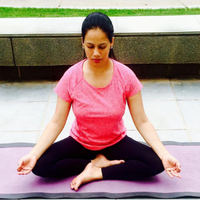
Deepti Bhandari
Deepti is a gifted teacher who has amassed over 12+ years of experience in the realms of spirituality and yoga. She is renowned for her exceptional class presentations and her ability to instill tranquility through yoga practices during her sessions.
Originally from Rishikesh, the yoga capital of the world, Deepti holds a Master’s degree in Yoga and is an expert in Hatha yoga, Raj yoga, and Kriya yoga. With a wealth of diverse teaching experience across various institutes and ashrams, Deepti has made significant contributions to the field.
From 2007 to 2014, she served as a yoga instructor at Ananda in the Himalayas, where she played an integral role in elevating the resort to the prestigious No.1 Spa in the world. Furthermore, she currently serves as a consulting practitioner at a multispeciality hospital in Delhi, NCR.
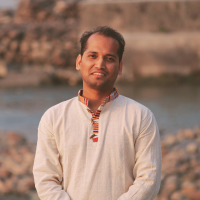
Ashish Painuly
Ashish is a yoga alliance registered teacher and continuing education provider with more than 5 years of experience in teaching Asanas, Mudras, and Bandhas in kundalini and kriya yoga. He is one of the people behind fitsri.com and is currently responsible for content creation on the website. He manages the yoga content on a wide range of topics, including specific yoga practices, pranayama, meditation, yoga types, how-to guides, etc.
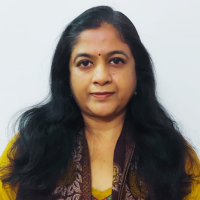
Manisha
Manisha is a Yoga Instructor and practitioner. Having completed her master’s degree in both English and Yoga, she is also a graduate in Music and Education. Currently, she teaches at various Yoga Schools in Rishikesh. Manisha specializes in conducting Yoga Philosophy, Pranayama, and Meditation classes, incorporating Yoga Nidra, Mantra chanting, and other traditional meditation techniques sourced from authentic Indian traditions.
She integrates techniques from the renowned Bihar School of Yoga, known for its authentic and practical approach to teaching worldwide. In addition, Manisha is a lifelong learner who guides a group of students to experience Yoga as a pathway to self-discovery. To date, she has taught students from around the world, who continue to carry forward the legacy of yoga in their respective countries.
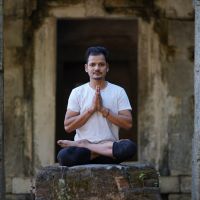
Pratap Rawat
Pratap Rawat’s dedication to yoga and his deep knowledge of its principles and practices make him a highly respected teacher in Rishikesh, Uttarakhand. His academic background, with a Master’s Degree in Yoga and the Vedic Sciences from Sanskrit University in Haridwar, underscores his commitment to the discipline.
Specializing in Ashtanga Yoga, Pratap’s classes cater to both intermediate and advanced students, conducted in Led and Mysore style sessions. His teaching style is known for its energy and thoroughness, ensuring that beginners not only learn the basics but also develop a solid understanding of yoga philosophy and techniques.
Pratap’s exacting standards are evident in his teaching approach, as he challenges his students to push their boundaries and grow in their practice. His dedication is such that he’s reputed to have taught entire classes while in a headstand, demonstrating his mastery of the discipline and his ability to inspire others through his actions.
 As featured in
As featured in



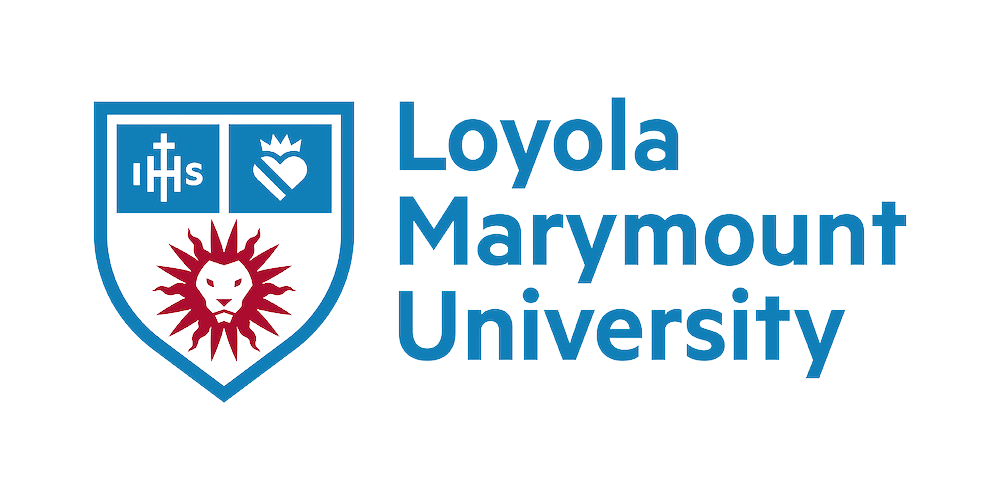
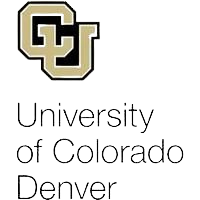
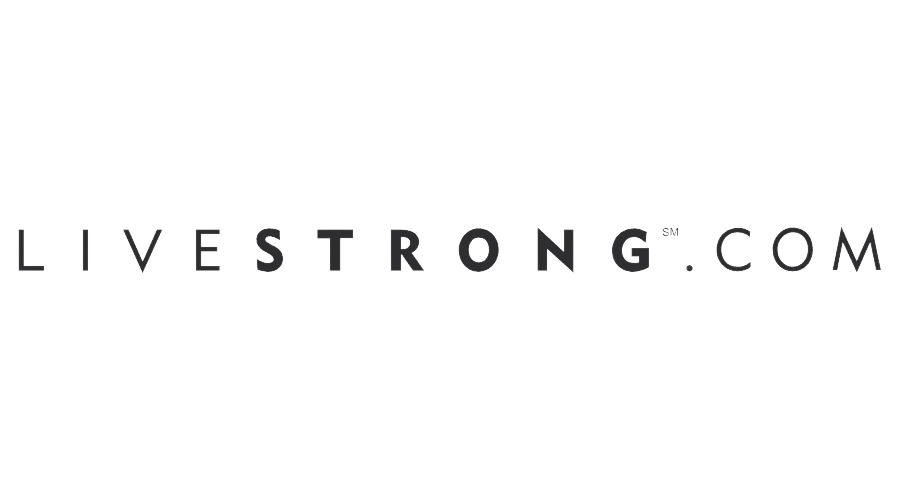
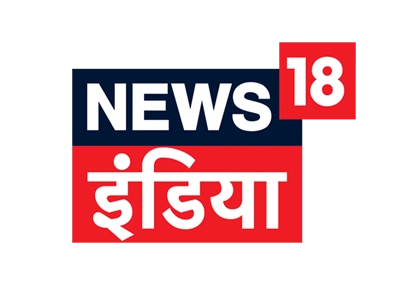
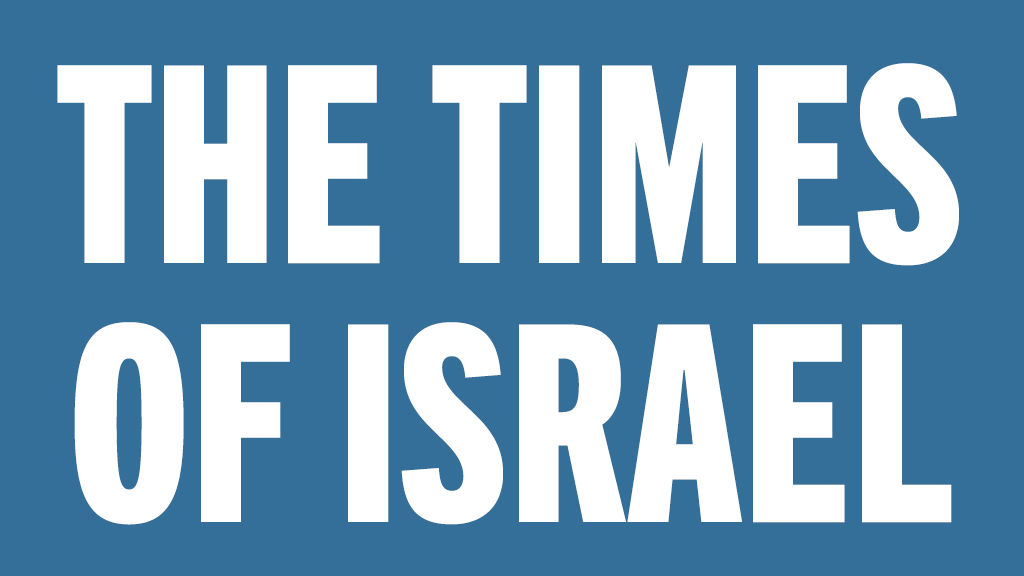
Online Yoga Teacher Training Course Registration
After you press “Book Your Spot” you will be redirected to the payment page. There you will see three payment modes available for Indian and International payments separately. Once you have paid, you will get the details about the teacher training program in your email.
In case you do not get the email from us within a day, please check your spam folder for an email from Fitsri. Or you can directly email us.
You can contact us directly at contact(at)fitsri.com or Whatsapp for any query related to this program.
Yes, our online Kundalini Yoga TTC program is designed to accommodate practitioners of all levels, including beginners. The course provides a comprehensive foundation and progressively builds upon it
Yes, participants who successfully complete the program, including assessments and assignments, will receive a Kundalini Yoga Teacher Training Certificate accredited by Yoga Alliance USA.
The live classes in our online Kundalini Yoga TTC program are conducted through the Zoom platform, a user-friendly video conferencing tool.
Yes, all live sessions are recorded and available for participants to review at their convenience. This flexibility ensures that you can catch up on missed classes.

